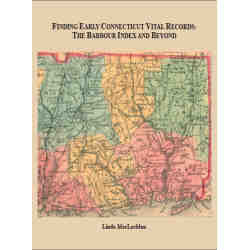
Among its many features, Dr. David Dobson’s new book, Scottish Genealogy: Beyond the Basics explains the process of inheritance in Scotland and the terms and locations researchers must reckon with when hunting for them. Here’s a sample taken from the book:
Scottish Wills and Testaments
In Scotland inheritance is controlled by a testament, a term used to describe all the documents relating to the estate of a deceased person, while a will is a particular document in a testament. Assets are of two types: heritable, which consist of land and buildings; and movable, which refers to anything that can be physically transported, often referred to as “goods, gear, sums of money, and debts.” Before 1868 wills could transfer only moveable property, not heritable property. A 1964 act canceled these restrictions.
A testament testamentar is when the deceased left a will (i.e., testate), and when no will was left (intestate), a testament dative is drawn up by the court, formerly by the Commissary Court (Commissariat), now by the Sheriff Court. Prior to the Reformation, this function was fulfilled by the local diocese of the Roman Catholic Church, but in 1564 Commissary Courts were established for that purpose. There were thirteen, later twenty-two, Commissary Courts, which were created based on the former dioceses, with one in Edinburgh that had jurisdiction throughout Scotland and was also available to Scots dying abroad. Note that Scots living abroad sometimes registered their wills there, and any in England or in an English colony could use the Prerogative Court of Canterbury. You may also find wills and testaments recorded in Registers of Deeds. The surviving wills, before 1800, have been indexed and published by the Scottish Record Society, organized by Commissary and in alphabetical order. Some of these books are still available from the Society. Most reference libraries in Scotland have copies, and the contents of the books can be seen in digitized form on the website of the Scottish Record Society (www.scottishrecordsociety.org.uk/). Testaments 1514-1925 have been digitally imaged and can be viewed in the ScotlandsPeople Centre and in the National Records of Scotland Historical Search Room. Copies of these images are available for purchase on the ScotlandsPeople website (www. scotlandspeople.gov.uk), which also contains a full index to these testaments.
Below are two testaments from the various Commissary Courts, with sample extracts.
Aberdeen Commissariat Testaments, Index, 1715-1800 (Francis J. Grant, Edinburgh, 1899):
Jean Glass, widow of Duncan Cumming a merchant in Aberdeen, testament confirmed on 5 February 1729; also of Jane Patterson, late in Peterhead, widow of Joseph Johnston, sometime quartermaster of the 10th Regiment of Foot, testament confirmed on 11 October 1779).
Argyle Commissariat Testaments, Index, 1674-1800 (Francis J. Grant, Edinburgh, 1902):
Gilbert McArthur, overseer at the slate quarry at Esdale, testament confirmed on 12 March 1762; Margaret Lamont, eldest daughter of the deceased Dugald Lamont, and spouse of John Lamont of Kilfinan, testament confirmed on 18 May 1742.




